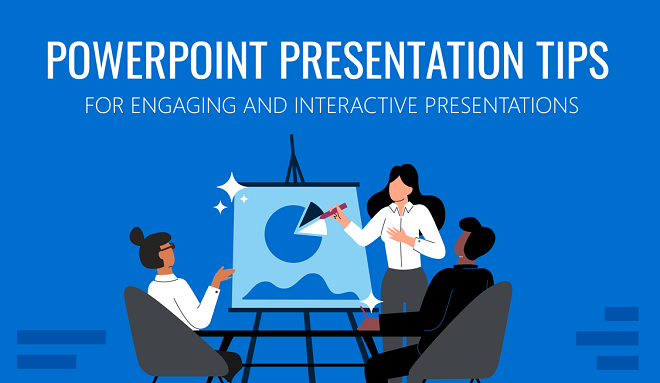Creating visually stunning PowerPoint presentations is an art that combines design principles, storytelling, and technical proficiency. Whether you’re presenting at a conference, pitching to clients, or sharing information with your team, a well-designed presentation can make a significant difference in how your message is received. With the right approach, you can transform a standard slide deck into an engaging, memorable experience for your audience. Here, we’ll explore essential tips for elevating your PowerPoint presentations, ensuring your next presentation stands out.

Understand Your Audience and Purpose
Before diving into design, it’s crucial to understand who your audience is and what you aim to achieve with your presentation. A PowerPoint presentation designer knows that tailoring the content and design to fit the audience’s expectations and needs can significantly increase engagement and retention. For instance, a presentation for industry professionals might require a different approach compared to one for educational purposes. Start by defining the key message you want to convey and the best way to communicate it to your specific audience.
Additionally, keeping the purpose clear from the beginning helps in selecting appropriate visuals and structuring your content. Whether you aim to inform, persuade, or entertain, every element of your presentation should align with this goal. This alignment ensures coherence and strengthens your message, making it more impactful.
Leverage High-Quality Visuals
The power of visuals in a presentation cannot be overstated. High-quality images, graphs, and infographics can help convey complex information more effectively than text alone. When selecting visuals, choose clarity and relevance over quantity. Each image should serve a purpose, whether it’s to illustrate a point, evoke emotion, or provide context.
Incorporating a variety of visual elements can also keep your audience engaged. However, it’s important to maintain a balance. Too many different types of visuals can be distracting. Aim for a cohesive design by using a consistent color scheme and style throughout your presentation. This consistency helps create a professional and polished look.
Optimize Text and Layout
While visuals play a significant role, text is often necessary to provide context or emphasize key points. When using text, keep it concise and easy to read. Large blocks of text can be overwhelming, so break it down into bullet points or short paragraphs. Choose a clear, legible font, and make sure the text size is large enough to be read from the back of the room.
The layout of your slides also contributes to the overall effectiveness of your presentation. Avoid clutter by leaving plenty of white space around text and visuals. This not only makes your slides more appealing but also makes it easier for your audience to focus on the essential elements. Effective use of space can guide the viewer’s attention and enhance the storytelling aspect of your presentation.
Make Use of PowerPoint Features and Tools
PowerPoint offers a wide range of features and tools that can help you create more dynamic and interactive presentations. Utilizing transitions and animations can add a layer of sophistication, but they should be used sparingly and with purpose. Overdoing it can distract from your message rather than enhance it.
Exploring PowerPoint’s design templates can provide inspiration and a solid foundation for your presentation. However, customizing these templates to fit your brand and message is key. You can also use SmartArt, charts, and other built-in tools to present data in a visually appealing manner. Experimenting with these features can help you discover new ways to present your content creatively.
Wrapping Up: The Art of Presentation Design
In conclusion, crafting visually stunning PowerPoint presentations requires a blend of creativity, strategic planning, and attention to detail. By understanding your audience, leveraging high-quality visuals, optimizing text and layout, and making use of PowerPoint’s features, you can elevate your presentations from mundane to memorable. Remember, the goal is not only to share information but to do so in a way that captivates and engages your audience.
With practice and these tips in mind, you’ll be well on your way to becoming a masterful presenter, capable of delivering impactful and visually appealing presentations every time.

